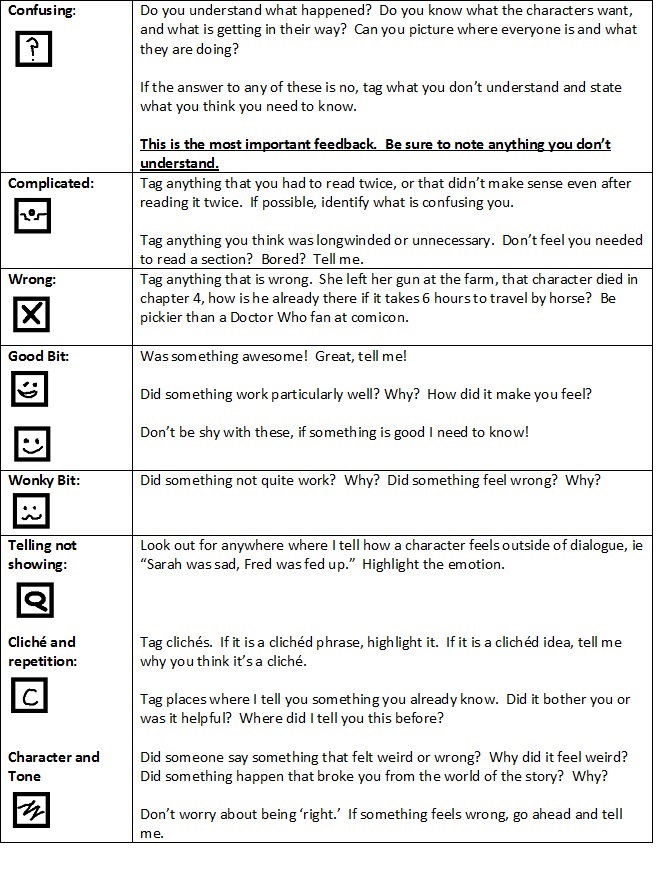Story Feedback Tips
When you give story feedback , your task is to give the writer a sense of how their story affects a reader, so they can control their craft better. Focus on the kind of feedback that is informative rather than evaluative, and be supportive but honest about how their story is working for you as a reader. It often helps to begin by sharing what you enjoyed most about the story.
To give good feedback you will need to read their story at least twice, and possibly more times, each time with a different focus.
Note that feedback is NOT criticism or evaluation. You are NOT saying if something is good or bad in general but how it is affecting you (or not). You are commenting on your honest reactions as a reader and places that are working or could be improved. So how do you do this?
Follow the instructions below to give helpful feedback.
Play by Play Feedback
The first time you read the story, keep a notepad–paper or digital–handy, and note your reactions as you read. These are often emotional, sensory, or conceptual. They are spontaneous. And your writer wants to know how their story is moving you. So turn up the dial so you are hyper-sensitive as you read. Note your reaction and what in the story caused that reaction. For example:
- Surprise: Egad! did she really kill her brother?
- Confusion: What? I don’t know what he just did or where he went?
- Laughter: Haha, when she tossed his red sneakers at the monster, that made me burst out laughing, OR I smiled…
- Curiosity: Yikes, how did that boy get to be so darn mean?
- Tension: When she opened that door, I was at the edge of my seat.
Criteria Based Feedback
On your second read of the story, you will look for specific criteria and try to comment on at least four on the list below. You can ask the writer which would be most useful, or they can include that in a message to you.
Note that if this feedback is helpful, you can continue to “trade” feedback outside of class Tasks, just to help each other keep improving your stories.
Also note that “Wrong” below refers to conflicting facts within the story, not an evaluation of the story. An example might be you start your story with the protagonist called Belinda, but later her name changes to Dina–and you just forgot to update the earlier names. They are factual errors in the story world that confuse the reader. For more information you can also view the Clichés Page.

